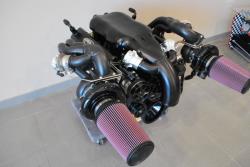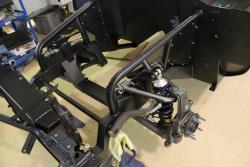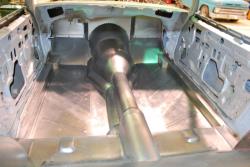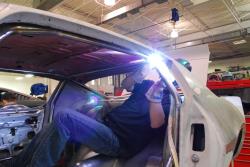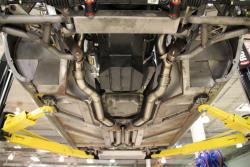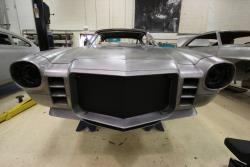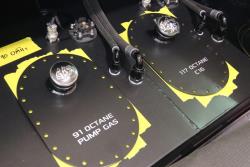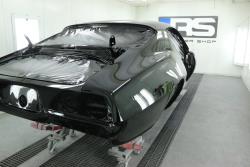[Video] Roadster Shop Built 1971 Camaro Features Twin Turbo Nelson Racing Engine and K&N
- 06.09.2017
If you’re among those who agree that the first gen Camaro is the best looking of the bunch, take a few minutes to check out the 1971 Camaro as re-interpreted by the famous Roadster Shop, of Mundelein, Illinois
Why go to all this trouble? As with the first generation Camaro, these models also suffer from a low degree of torsional rigidity, given that the subframe is only bolted onto the unibody rear section. The Fast Track hand-fabricated, fully-boxed 10 gauge steel frame rails run the full length of the car, providing both a lowered ride height and a solid basis from which the suspension can do its work.
At the rear, the wheels are connected to 31 spline stainless steel axles housed in a Strange Engineering rear end based on the Ford 9" configuration. Power is delivered to the rearend through a Tremec T56 transmission. Rear suspension is by large diameter, parallel four-bar linkage, also with "RS Edition" Penske coilovers. The body shell received some TLC next, with rear fenders flared in steel and rectangular air inlets fabricated and installed between the custom grille and the headlights. A scoop was fabricated and installed under the grille to deliver extra cooling air to the intercooler and radiator. The team at the Roadster Shop also addressed a small case of tin worm at the base of the rear window.
The level of craftsmanship is remarkable, particularly when you consider that most of the interior panels will be covered and never again see human eyes. Even the opening for the transmission in the firewall is a perfect radius. Soon after the photo on this page was taken all the beautiful handwork was covered with sound-deadening insulation and later with carpet. The interior metal work is capped off with a custom-built 4130 steel roll cage. It was now time to install the engine so that work could commence on all the various lines and hoses that are required to keep a seven-liter engine running at peak performance. Built by Nelson Racing Engines, the Dart aluminum small block has been punched out to 427 cubic inches.
To this mighty mouse motor, two 72 mm Turbonetics turbochargers have been added. Exhaust is routed out through stainless steel headers to the turbine wheel of the turbos. It’s then directed to the rear of the Camaro via an RS three-inch stainless steel exhaust system fitted within dedicated openings in the frame rails.
Now, of course, you’re ready to hear an astronomical horsepower number and the fact that the engine can only run on fuel that’s delivered in sealed drums by men in hazmat suits. Well, you’d be wrong, at least on the second part.
That’s almost like adding the output of an LT4 engine from a 2018 ZL1 Camaro with a toggle. On to the final details: on the interior, a custom console was fabricated from aluminum and installed, along with custom gauges for the dash, along with the integration of a Vintage Air system.
On the exterior, lightweight aluminum HRE wheels, sized 19x9.5 inches are bolted to the front, wrapped with 275/35R19 Michelin tires while at the rear 20x12-inch HRE wheels are fitted with 335/30R20 Michelin rubber. Behind the wheels reside Brembo brakes on all four corners. The Camaro was painted at the Roadster Shop in about one million coats of PPG black, looking deep enough to dangle your toes in it. According to the Roadster Shop, this build took a total of four years to complete. If that’s the case, what chance do we mere mortals have? If you want to see the finished Camaro, stop by K&N at the SEMA Show for the unveiling, booth number 22755. If you can’t make it to Vegas, look for show coverage on the K&N blog page. |

